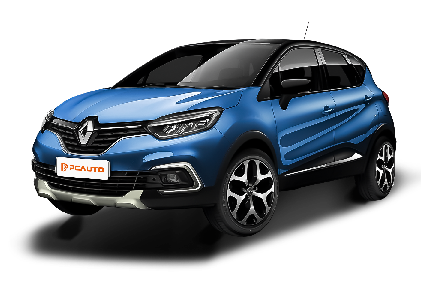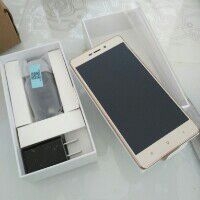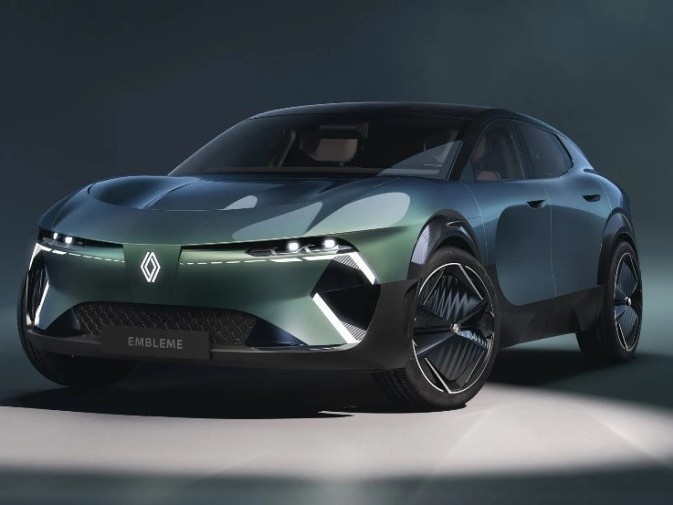Q
How to check tyre pressure on Renault Captur 2017?
To check the tire pressure on a 2017 Renault Captur, first make sure the car's had time to cool down—either leave it parked for at least 3 hours or don't drive it more than 2 kilometers. Next, locate the tire pressure label, which is usually on the driver's side door jamb or inside the fuel filler cap. This label lists the recommended pressures for front and rear tires (typically around 2.2-2.4 bar up front and 2.0-2.2 bar at the rear, but always go by what the label says). Grab a digital or analog tire pressure gauge, unscrew the valve cap from each tire, press the gauge firmly onto the valve stem, and take the reading. If the pressure's too low, top it up using an air compressor at a gas station or repair shop until it hits the recommended level; if it's too high, press the center of the valve stem to release some air. It's a good idea to check your tire pressure once a month, and definitely before any long road trips. Malaysia's hot weather can cause pressures to rise by 0.2-0.3 bar, so measuring when the tires are cold gives the most accurate reading. While you're at it, keep an eye out for uneven tire wear—incorrect pressure can speed up wear and tear, hurt fuel economy, and affect how the car handles. If your Captur has a Tire Pressure Monitoring System (TPMS), a warning light will pop up on the dashboard if there's an issue, but manual checks are still a crucial backup.
Special Disclaimer: This content is published by users and does not represent the views or position of PCauto.
Related Q&A
Q
What is the price of tyres in Captur?
The cost of tires for the Renault Captur can vary quite a bit depending on the brand, model, size, and where you buy them. Typically, you're looking at around RM300 to RM800 per tire for the original equipment (OE) spec ones. If you opt for high-performance tires or go with big-name premium brands, expect to pay more.
In Malaysia, popular tire brands like Michelin, Bridgestone, Continental, and Goodyear all have options that fit the Captur. When picking tires, I always tell owners to think about their driving style and the roads they usually hit. For example, if you do a lot of highway miles, durability and tread life should be high on your list. If you prioritize a smooth, quiet ride, then those premium comfort-focused lines are worth checking out.
Also, keep an eye out for sales or package deals when buying tires. A lot of shops throw in extras like free installation, wheel balancing, or even tire warranties. Those little perks can actually save you some cash in the long run.
Last but not least, don't forget to regularly check your tire wear and pressure—super important for safety. If the tread is looking really worn down or you spot any cracks, it's time to swap them out. Better safe than sorry on the road!
Q
What is the fuel tank size of the Renault Captur 2017?
The 2017 Renault Captur comes with a 45-liter fuel tank, a design that's perfectly suited for daily city commutes and short to medium road trips. For Malaysian drivers, this 45-liter capacity typically translates to a range of around 500 to 600 kilometers under mixed driving conditions, though your actual mileage will depend on your driving style and the roads you take. As a compact SUV, the Captur already boasts solid fuel economy thanks to its efficient engine tech, which helps keep those fuel expenses in check. Even with Malaysia's relatively affordable petrol prices, a well-sized tank combined with good fuel efficiency remains a key consideration for car buyers here. On top of that, the Captur's fuel tank is built with leak-proof and corrosion-resistant technology, ensuring it stays safe and reliable for the long haul. If you're someone who frequently takes longer drives, it's a good idea to regularly check the tank and fuel system to keep everything running at its best and extend your vehicle's lifespan.
Q
What size Tyres are on a 2017 Renault Captur?
The 2017 Renault Captur offered two tyre setups in Malaysia, depending on the trim level. The base models typically rolled on 16-inch wheels shod with 195/60 R16 tyres, while higher-spec variants upped the ante with 17-inch rims paired with 215/55 R17 rubber. Both options strike a decent balance between grip and comfort, whether you're tackling wet roads or just cruising around town.
When it comes to picking tyres, size is obviously key, but Malaysian drivers should also factor in our tropical climate. With the heat and frequent downpours, prioritising all-season tyres with good drainage or even dedicated rain tyres makes sense. Don't forget to regularly check your tyre pressure and tread depth – safety first, folks. If you're chasing sharper handling, you might think about switching to lower-profile tyres, but just be aware that could firm up the ride a bit. More often than not, sticking with the factory-spec tyres gives you the best all-round package.
Q
Which country made the Renault Captur?
The Renault Captur is originally designed and built by French automaker Renault. As a compact SUV targeting global markets, it's produced in several countries to meet regional demands – think France, Spain, and India, to name a few. For Malaysia, the Captur is mainly brought in via imports, though the specific source might vary slightly depending on the model year and trim.
Malaysian buyers are drawn to the Captur for its stylish looks, flexible interior space, and efficient powertrains – it's a solid pick for city commuting and family use alike. Renault's dealer network in Malaysia also backs it up with after-sales service and warranty coverage, so owners can enjoy a hassle-free driving experience.
What really stands out is the Captur's decent safety kit and tech features. You're looking at things like a multimedia touchscreen and various driver assistance systems, which give it a leg up in its segment. If you're curious about the Captur, swing by your local Renault showroom for a test drive and to get the full lowdown – it's worth checking out in person.
Q
What is the top speed of the Renault Captur 2017?
The top speed of the 2017 Renault Captur varies depending on the engine setup. The version with the 1.2-liter turbocharged petrol engine (TCe 120) can hit around 190 km/h, while the 1.5-liter diesel (dCi 90) model is slightly slower at approximately 175 km/h. This compact SUV is all about city driving and fuel efficiency, and its performance is more than enough for daily commutes and highway runs here in Malaysia.
Renault Captur has struck a chord with young families thanks to its nimble handling and stylish looks. In the Malaysian market, these compact SUVs are a hit because their size is just right and they're easy on fuel, making them perfect for navigating those congested city streets. If you're craving a bit more pep, keep an eye on its sport mode – it sharpens up the throttle response nicely. Of course, when you're out there driving, always stick to Malaysia's speed limits. Safety first, folks.
Q
What size engine is the Renault Captur 2017?
The 2017 Renault Captur hits the Malaysian market with two engine choices: a 1.2-litre turbocharged petrol (TCe 120) and a 1.5-litre diesel (dCi 90). Both are known for their efficiency and low emissions, making them solid picks whether you're zipping around the city or cruising on a long highway stint.
The 1.2T packs 118 horsepower and 190 Nm of torque, paired with either a 6-speed manual or EDC dual-clutch auto. It delivers that snappy acceleration you want when you need to overtake or merge quickly. On the flip side, the 1.5 diesel prioritizes fuel sipping – 90 horsepower and a meaty 220 Nm of torque, perfect if you're all about keeping those fuel stops to a minimum.
What's cool about the Captur, being a compact SUV, is how it balances power and green credentials. These engines meet Euro emission standards, and in real-world Malaysian driving, they hold up really well. Plus, servicing and maintenance aren't a hassle here. So for Malaysian buyers, it really comes down to your driving style and fuel preference. The turbo petrol is for those who love that instant power kick, while the diesel? It's your best friend if you clock up a lot of highway miles regularly.
Q
How big is the tank on a 2017 Renault Captur?
The 2017 Renault Captur comes with a 45-liter fuel tank, which is slightly above average for a small SUV in its class. That's more than enough for daily commutes and weekend getaways around town. Malaysian drivers can typically expect to squeeze out about 500 to 600 kilometers on a full tank under city conditions, though your actual mileage will depend on how you drive and the traffic you're dealing with.
What's clever about the Captur – being the urban-focused crossover that it is – is how that tank size balances fuel efficiency with real-world usability. Pair that with either the peppy 1.2-liter turbo petrol or the torquey 1.5-liter diesel engine (depending on your market's specs), and you've got a setup that's pretty easy on fuel.
A quick tip for owners: make sure to check that your fuel cap seals properly and that the low-fuel warning light is working as it should. Also, keep in mind that Malaysia's common RON95 petrol works perfectly fine in this car. If you're planning a long drive, especially over in East Malaysia, it's smart to map out your petrol stops ahead of time – some of those remote areas have pretty big gaps between stations. Oh, and don't sleep on the simple stuff: keeping your tires properly inflated and sticking to regular servicing can go a long way in keeping those fuel bills in check. Handy pointers for all you savvy Malaysian drivers out there trying to stretch every ringgit!
Q
How many litres per 100km is a Renault Captur?
The fuel efficiency of the Renault Captur varies depending on the specific trim and powertrain setup. Here in Malaysia, the version you'll mainly find on the market comes with a 1.3-liter turbocharged petrol engine. Official figures peg the combined fuel consumption at around 5.6 to 6.0 liters per 100 kilometers, but remember, real-world numbers can swing based on how you drive, the roads you're on, and how much you're hauling. This little SUV has won over city dwellers with its thrifty nature and nimble handling.
It's worth pointing out that Malaysian drivers need to factor in our local conditions too – think stop-and-go city traffic or cranking up the AC during those hot spells, both of which can take a bite out of fuel economy. Rivals like the Honda HR-V or Toyota C-HR are in the same ballpark, typically returning between 5.5 to 6.5 liters per 100 kilometers. My advice? Always take it for a test drive to get a feel for the real-world mpg, and keeping up with regular maintenance plus proper tire pressure will help keep that fuel efficiency in top shape.
Q
What is the fuel consumption of the 2017 Renault Captur?
The 2017 Renault Captur's fuel economy in the Malaysian market varies by engine option. The 1.2-liter turbocharged petrol variant returns a combined fuel consumption of around 5.6 liters per 100 kilometers, while the 1.5-liter dCi diesel engine is even thriftier, sipping just about 4.2 liters per 100 km combined. Of course, real-world figures can fluctuate depending on your driving style and the roads you tackle.
This compact SUV, with its lightweight build and efficiently tuned powertrains, is a solid fit for city commuting. If you keep your acceleration smooth and make smart use of the cruise control on those open stretches, you might even squeeze out a bit better fuel efficiency. It’s worth mentioning that Malaysia’s hot climate can put a slight extra load on the air-con system, so keeping your air filter clean and tires properly inflated with regular maintenance will help you stay in that optimal efficiency zone.
Rivals like the Honda HR-V or Mazda CX-3 fall into a similar fuel economy bracket, so at the end of the day, it really comes down to personal preference and what you prioritize in your daily drive when picking between them.
Q
How much is a 2017 Renault Captur worth?
The 2017 Renault Captur is fetching around RM40,000 to RM60,000 on Malaysia's used car market these days. Of course, the exact price hinges on factors like overall condition, mileage, trim level, and service history. The base 1.6L naturally aspirated models sit at the lower end of that range, while the higher-spec turbo variants or those still with some original factory warranty leftover can nudge closer to the RM60k mark.
This compact SUV is all about sharp looks and nimble handling, making it a solid pick for city driving. When you stack it up against the 2017 Honda HR-V or Mazda CX-3, it tends to come in a bit cheaper. And maintenance costs? They’re pretty reasonable too. Sure, Renault’s official dealer network here isn’t as widespread as the Japanese brands, but third-party workshops can usually source common parts without too much hassle.
If you’re in the market, here’s the lowdown: prioritize checking the gearbox condition (especially on auto models) and make sure all the electronic gadgets work as they should. Definitely ask to see the full service book—no skimping on that. If your budget stretches, going for a factory-certified used unit might be worth it for the extra peace of mind with a warranty. Oh, and don’t forget: Malaysia’s relentless heat can take a toll on rubber components and battery life, so a thorough professional inspection before signing on the dotted line is a total must.
Popular Cars
Model Year
Car Compare
Car Photo
Latest Q&A
Q
Does the 2019 Golf GTI have a timing belt or chain?
The 2019 Golf GTI uses a timing chain instead of a timing belt—a design that offers better durability and lower maintenance costs. Typically, a chain lasts as long as the engine itself and rarely needs replacement, whereas a belt requires inspection or replacement every 60,000 to 100,000 km. If neglected, a worn belt can snap and cause severe engine damage.
VW’s EA888 engine family has long relied on chain-driven systems, which are relatively quiet and highly reliable. That said, it’s crucial to periodically check the tensioner’s condition. Some earlier models experienced timing issues due to tensioner design flaws, but this was addressed in the 2019 version.
For performance enthusiasts, a chain system handles high-revving stress better, making it a common choice for hot hatches like the GTI. For daily driving, just stick to VW 50400/50700-spec oil as recommended in the manual—proper lubrication keeps the chain system healthy long-term.
One heads-up: If you hear noticeable metallic rattling near the front of the engine, have the guides or tensioner inspected ASAP. Unlike the telltale belt squeal before failure, this noise is a classic sign of chain-related wear.
Q
What is the recall on the 2019 GTI?
The 2019 Volkswagen Golf GTI was subject to a safety recall addressing two potential issues. First, the fuel pump control unit software could malfunction, potentially causing engine stalling in rare cases. Second, some vehicles might have rear suspension stabilizer link bolts that weren't tightened to specification, posing a loosening risk. Owners can visit authorized dealers for free software updates or bolt retightening.
These proactive recalls demonstrate Volkswagen's commitment to safety. Dealers often handle outstanding recall items during routine maintenance.
For performance-oriented models like the GTI, it's wise to go beyond recall checks. Pay close attention to the turbo system, DSG transmission fluid, and brake wear—these components endure more stress during spirited driving. If warning lights appear or you notice unusual noises, get a professional inspection promptly. Keeping the car in top shape ensures you can fully enjoy its dynamic capabilities.
Q
Does the 2019 GTI require premium gas?
The 2019 GTI does recommend using high-octane fuel (typically RON 95 or above). Its 2.0L turbocharged engine has a relatively high compression ratio, and premium gas ensures optimal performance while reducing knock risk. It also helps maintain engine cleanliness and long-term reliability.
While the car may tolerate lower-octane fuel (like RON 92), you’d see slightly reduced power output and fuel efficiency. Over time, it could also affect engine longevity. Turbocharged engines are particularly sensitive to octane ratings since turbos generate higher heat and pressure—high-octane fuel handles these conditions better.
Mixing different fuel grades occasionally won’t hurt, but sticking to the manufacturer’s recommendation is ideal. Also, periodic fuel additive treatments can help clean carbon buildup, especially for direct-injection engines.
One more thing: even with the same octane rating, fuel additive packages vary by brand. So, picking a reputable gas station matters too.
Q
How long will a 2019 GTI last?
The lifespan of a 2019 GTI largely depends on maintenance and driving habits. With regular oil changes, transmission fluid replacements, and avoiding aggressive driving, it can easily clock over 200,000 kilometers—or even more. Its 2.0T engine and DSG gearbox are proven combos, and as long as you stick to the factory service schedule, mechanical reliability won’t be an issue.
Just keep in mind: turbocharged engines demand extra care. Always use the right spec full-synthetic oil and monitor the cooling system. Climate plays a role too—hot, humid conditions mean paying extra attention to rubber seals and electronics. Every 50,000 km, have the timing chain and high-pressure fuel pump inspected (key items for turbos).
Driving style matters. Don’t redline it constantly, and let the engine warm up properly after cold starts. Rustproofing helps long-term durability, so regular underbody washes are smart. Nail these details, and this car’s built to last.
Q
How fast is the 2019 GTI?
The 2019 GTI truly delivers when it comes to performance. Under the hood lies a punchy 2.0-liter turbocharged four-cylinder, churning out 228 horsepower and 350 Nm of torque. Whether you opt for the engaging 6-speed manual or the lightning-fast 7-speed DSG, this hot hatch rockets from 0-100 km/h in just 6.3 seconds, with an electronically limited top speed of 250 km/h.
What really sets the GTI apart is its razor-sharp handling. The sport-tuned suspension and electronic differential lock work together to deliver precise steering and rock-solid cornering stability. It’s the perfect blend of everyday practicality and proper driver’s car thrills—a well-rounded hot hatch in every sense.
For enthusiasts, the GTI’s tuning potential is massive. Many owners go for ECU remaps or intake/exhaust upgrades to squeeze out even more power. Just remember to keep things street-legal—safety and compliance should always come first. Around here, these pocket rockets have a solid following, and it’s easy to see why.
View More


















Pros
Cons